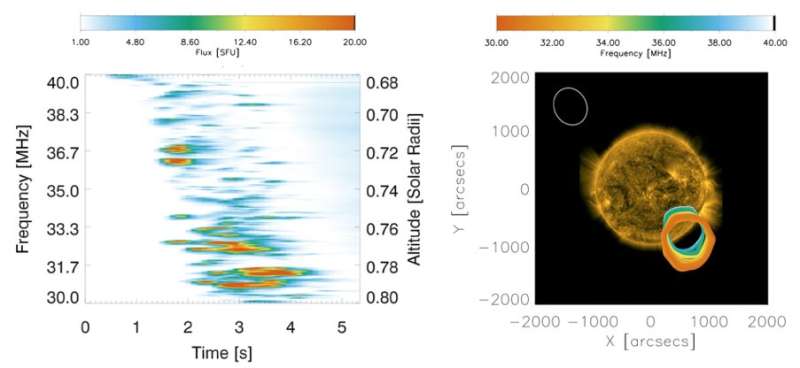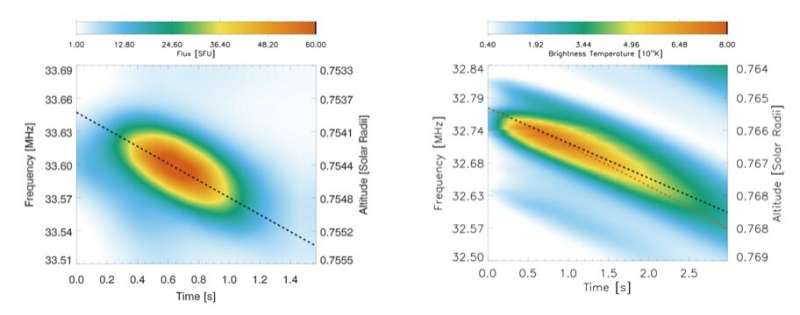Langmuir wave motion observed in the most intense radio sources in the sky

The sun routinely produces energetic electrons in its outer atmosphere that subsequently travel through interplanetary space. These electron beams generate Langmuir waves in the background plasma, producing type III radio bursts that are the brightest radio sources in the sky (Suzuki and Dulk, 1985). These solar radio bursts also provide a unique opportunity to understand particle acceleration and transport, which is important for our prediction of extreme space weather events near the Earth. However, the formation and motion of type III fine frequency structures (see Figure 1) is a puzzle, but is commonly believed to be related to plasma turbulence in the solar corona and solar wind.
A recent work by Reid and Kontar combines a theoretical framework with kinetic simulations and high-resolution radio type III observations using the Low Frequency Array (LOFAR) and quantitatively demonstrates that the fine structures are caused by the moving intense clumps of Langmuir waves in a turbulent medium. These results show how type III fine structure can be used to remotely analyze the intensity and spectrum of compressive density fluctuations, and can infer ambient temperatures in astrophysical plasma, both significantly expanding the current diagnostic potential of solar radio emission.
The radio fine structures (Figure 1) have a small drift in frequency caused by the motion of Langmuir wave clumps moving through space at their group velocity. Measuring this frequency drift (Figure 2) reveals the Langmuir wave group velocity, and subsequently the background thermal velocity. This new technique increases the scope of solar radio bursts to be used as a remote plasma temperature diagnostic. The observation infers a corresponding coronal plasma temperature around 1.1 MK. The radio fine structure also provides an additional way to estimate the electron beam bulk velocity, which is mostly controlled by the beam energy density.

In summary, the results create a framework for exploiting the diagnostic potential of radio burst fine structure to estimate plasma temperatures and density turbulence. This new potential is especially relevant given the enhanced resolution of new-age ground-based radio telescopes that are resolving much more fine structure originating from the solar corona. Moreover, the closer proximity of Parker Solar Probe and Solar Orbiter to radio emission originating in the very high corona or solar wind, and hence higher sensitivity, allows fine structures to be detected in situ.
More information: Hamish A. S. Reid et al, Fine structure of type III solar radio bursts from Langmuir wave motion in turbulent plasma, Nature Astronomy (2021). DOI: 10.1038/s41550-021-01370-8
Journal information: Nature Astronomy
Provided by Community of European Solar Radio Astronomers





















